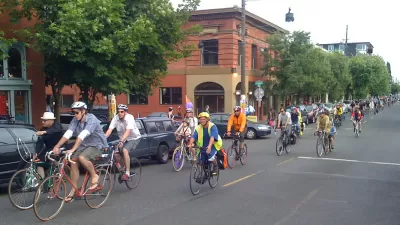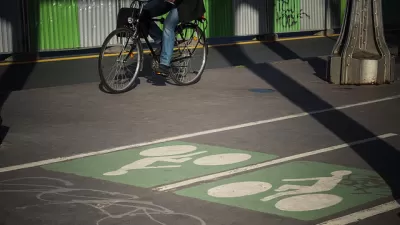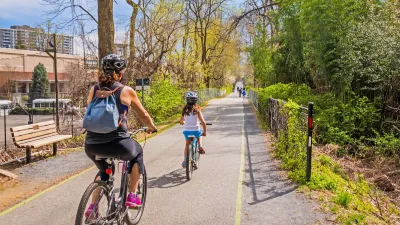A recent study from researchers at the University of Bologna adds to a growing body of evidence regarding their effects of laws that require bicyclists to wear high-visibility clothing.

A study by Gabriele Prati of the University of Bologna examined legislation mandating high-visibility clothing for bicyclists and found that such laws did not influence the number of cyclists in crashes, nor do such laws influence the total number of vehicles involved in road crashes.
Henry Robertshaw shares the new of the new study, published in the March 2018 issue of the Journal of Transport & Health. "This is the latest in a number of studies to cast doubt on the idea that making cyclists wear hi-vis clothing has an impact on making cyclists safer, even if there is more evidence that wearing hi-vis or reflective clothing makes cyclists more visible to drivers," writes Robertshaw.
FULL STORY: Making hi-vis clothing compulsory for cyclists does not reduce number of crashes, study finds

Planetizen Federal Action Tracker
A weekly monitor of how Trump’s orders and actions are impacting planners and planning in America.

Maui's Vacation Rental Debate Turns Ugly
Verbal attacks, misinformation campaigns and fistfights plague a high-stakes debate to convert thousands of vacation rentals into long-term housing.

Cuomo Is the Candidate of Both NIMBYs and Developers. What Gives?
In the New York City mayoral race, odd bedfellows align to preserve the housing status quo.

The Subversive Car-Free Guide to Trump's Great American Road Trip
Car-free ways to access Chicagoland’s best tourist attractions.

San Antonio and Austin are Fusing Into one Massive Megaregion
The region spanning the two central Texas cities is growing fast, posing challenges for local infrastructure and water supplies.

Charlottesville Temporarily Has No Zoning Code
A judge ordered the Virginia city to throw out its newly revised zoning code, leaving permitting for new development in legal limbo.
Urban Design for Planners 1: Software Tools
This six-course series explores essential urban design concepts using open source software and equips planners with the tools they need to participate fully in the urban design process.
Planning for Universal Design
Learn the tools for implementing Universal Design in planning regulations.
Heyer Gruel & Associates PA
JM Goldson LLC
Custer County Colorado
City of Camden Redevelopment Agency
City of Astoria
Transportation Research & Education Center (TREC) at Portland State University
Jefferson Parish Government
Camden Redevelopment Agency
City of Claremont





























